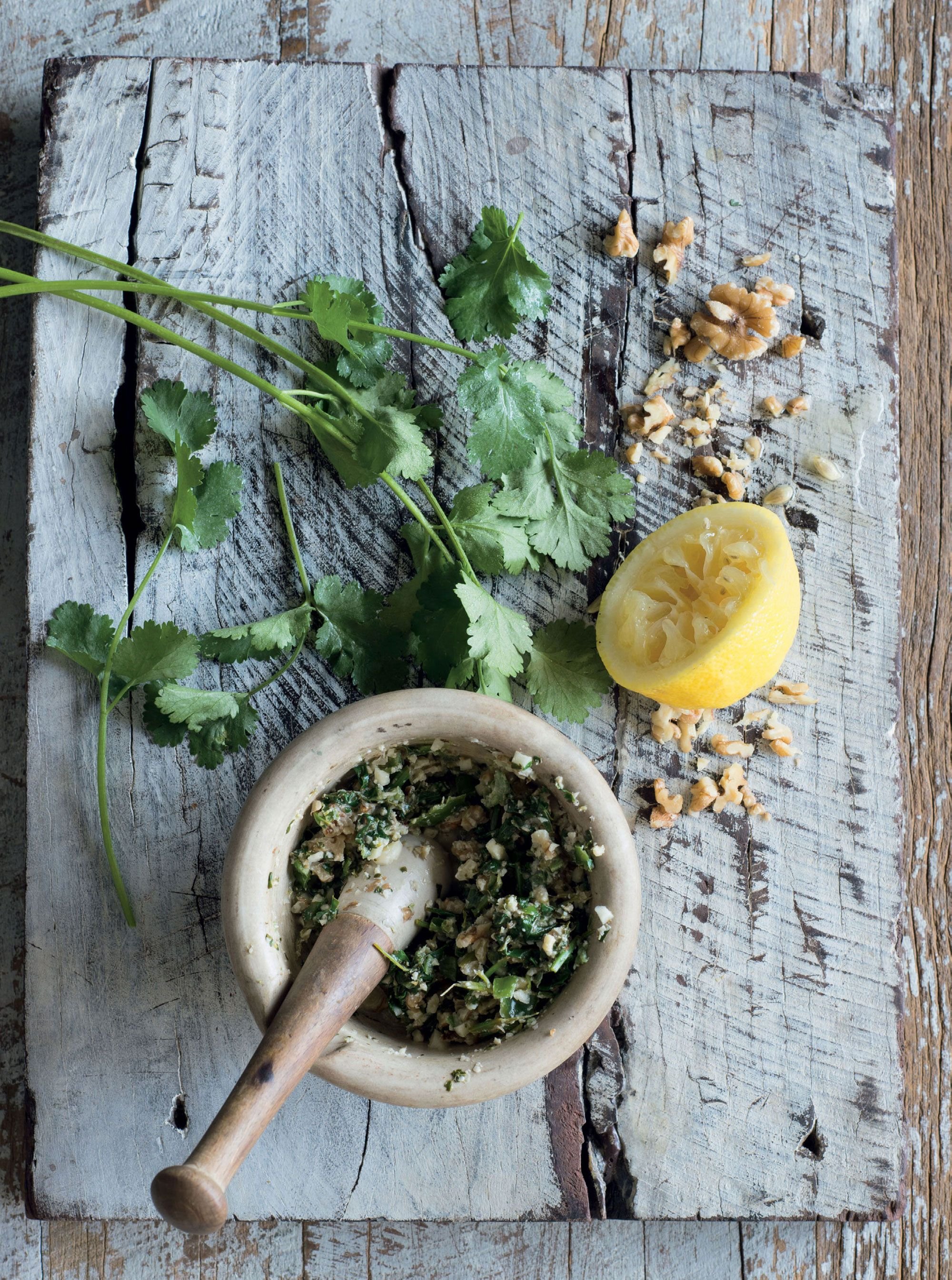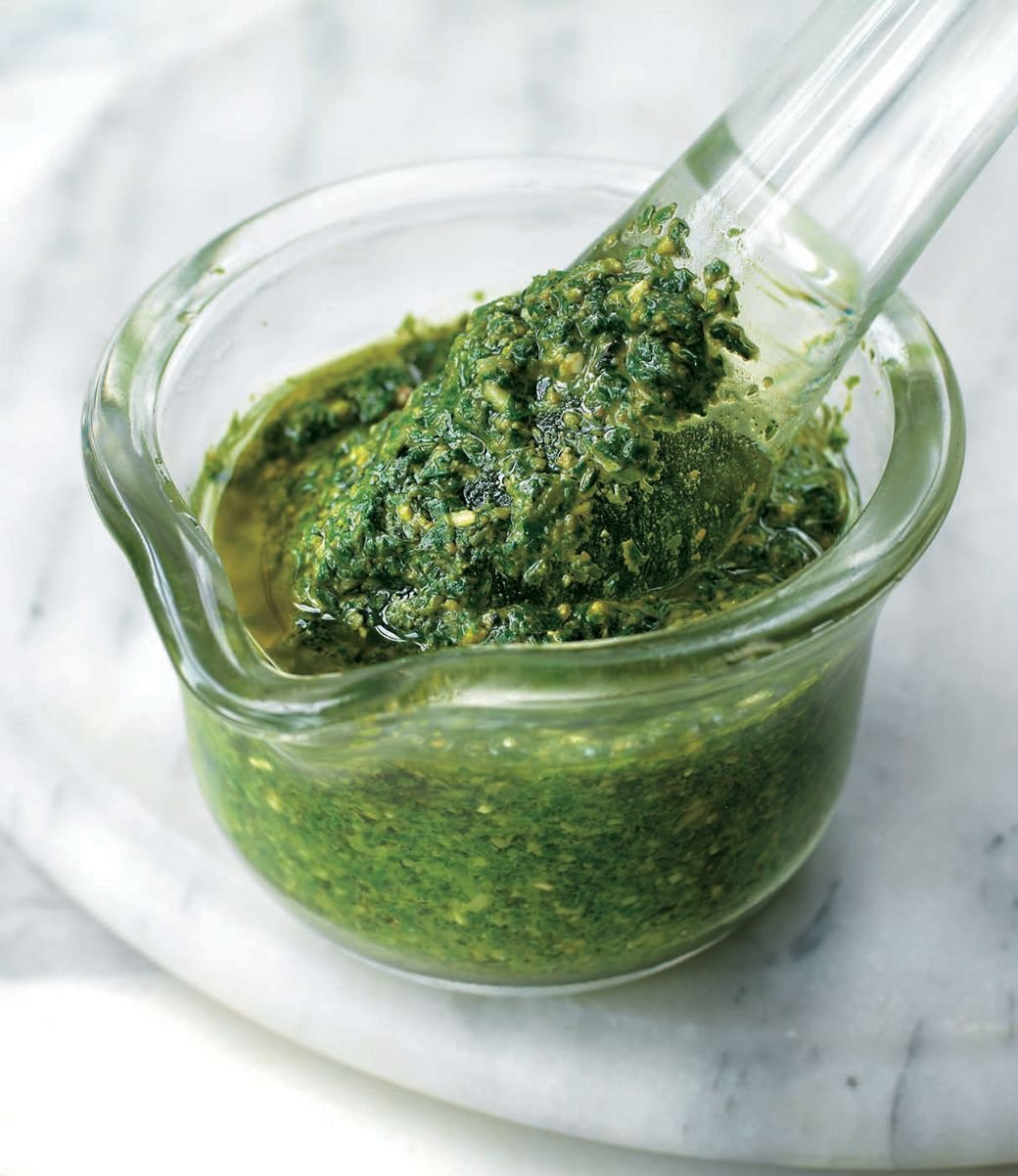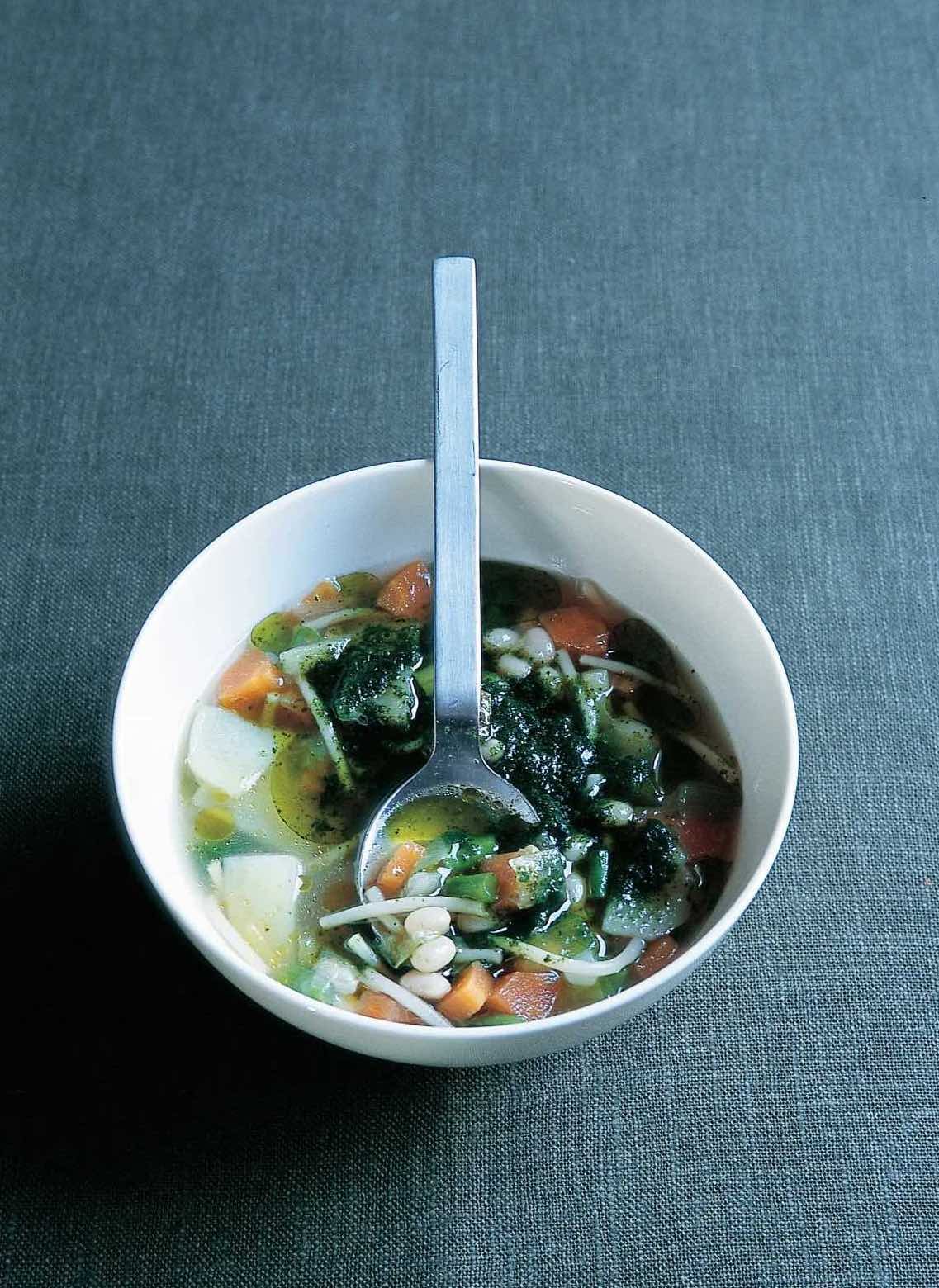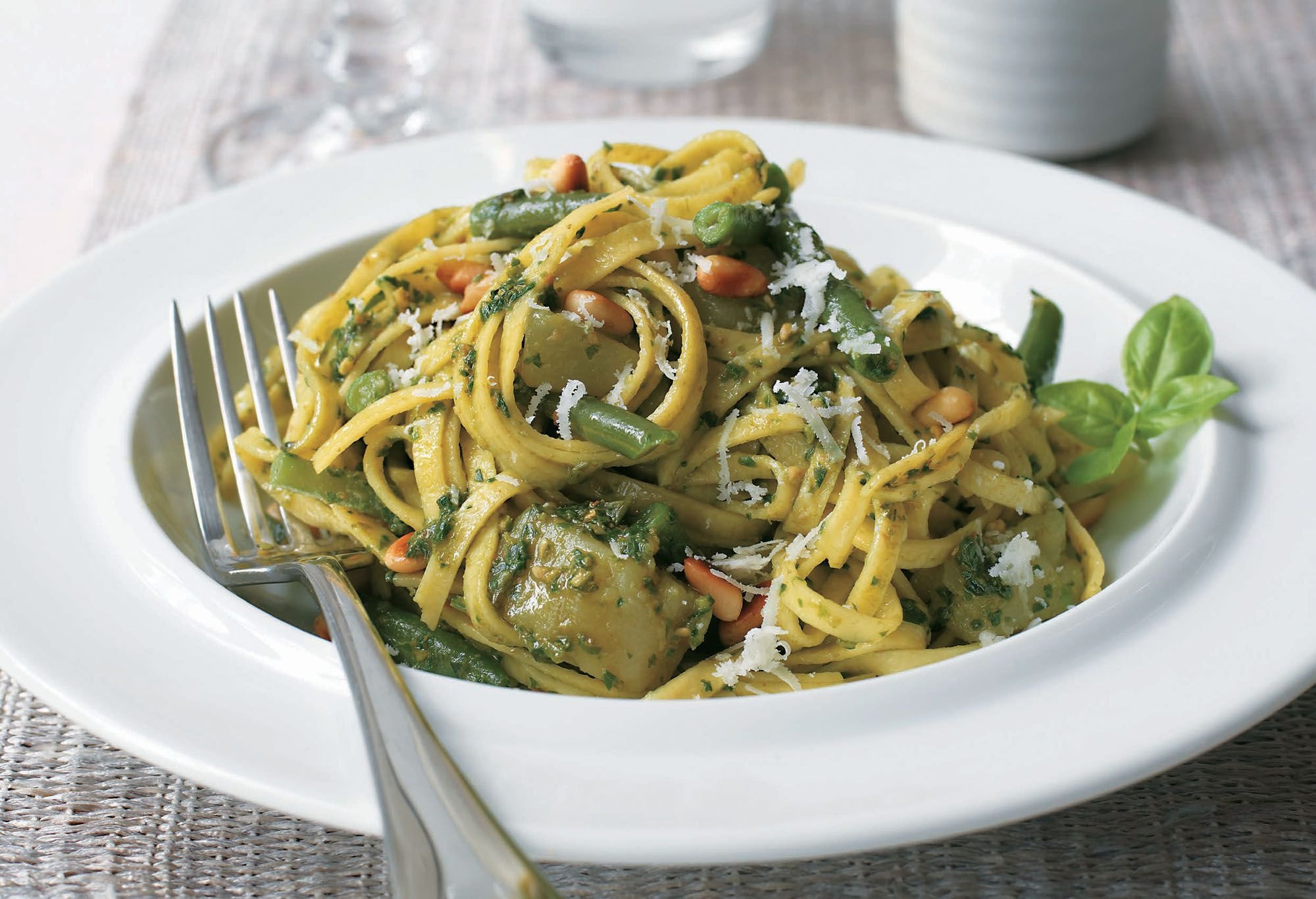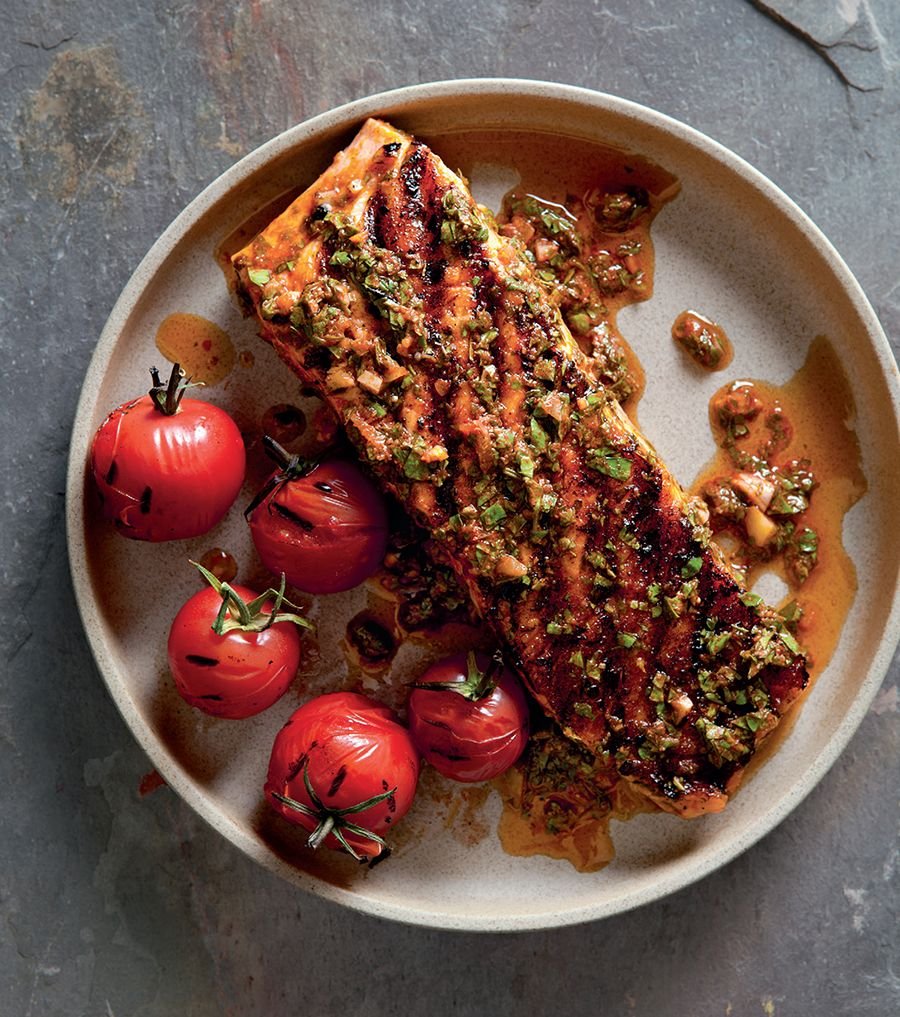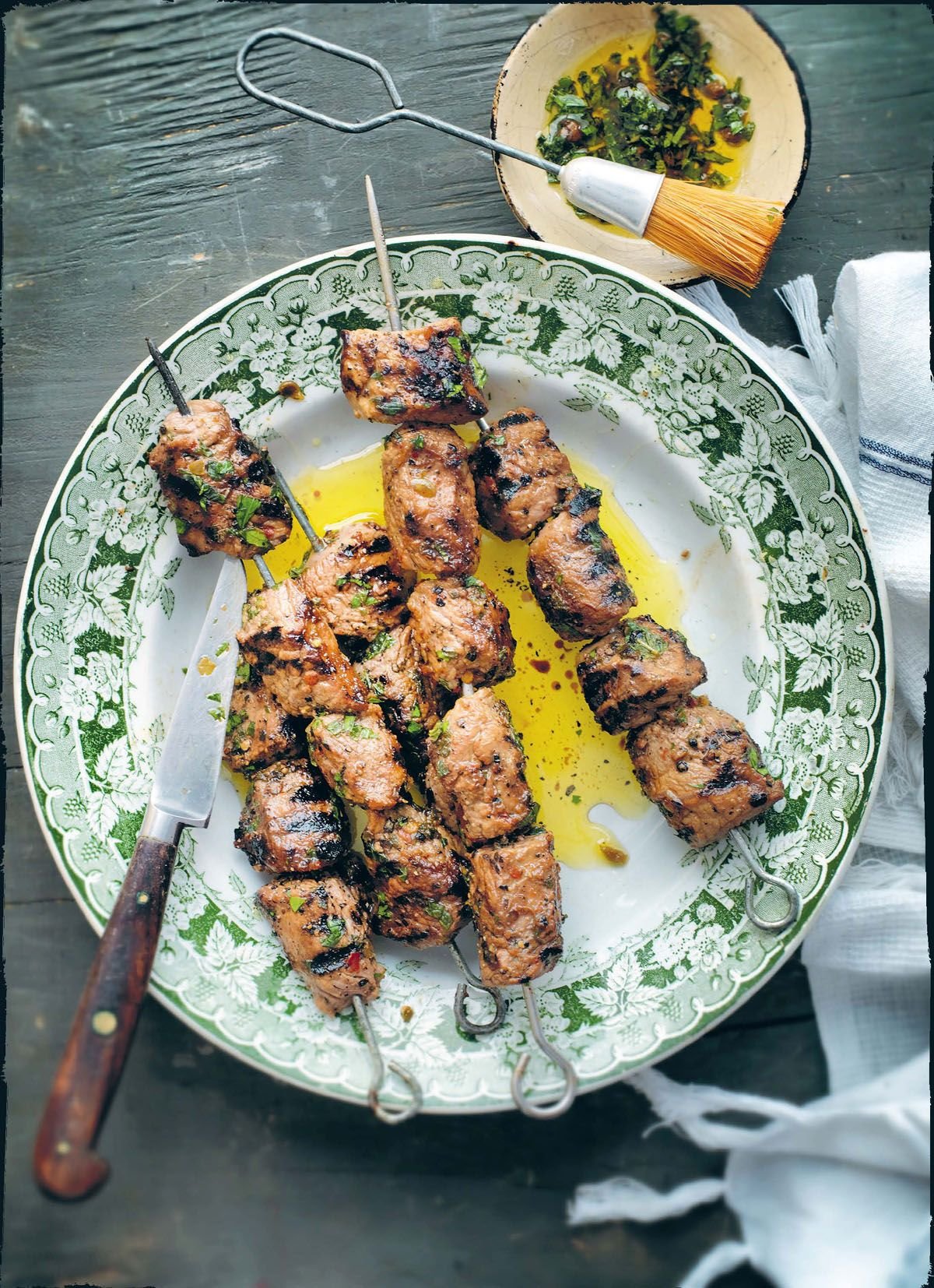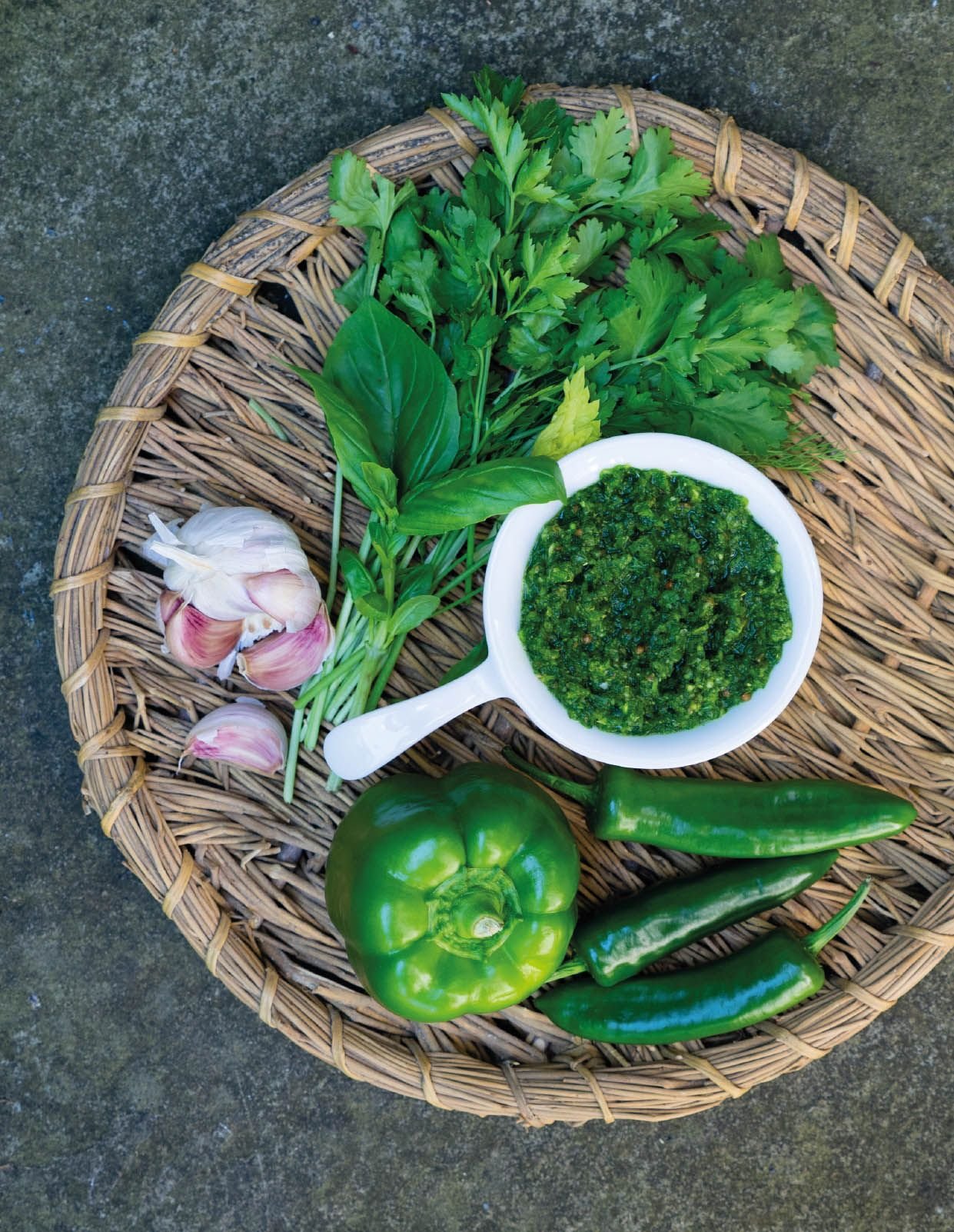Pesto and beyond: summer herb sauces explained
By Susan Low
Green sauce. In many ways it’s one of the most obvious and simple concoctions in the world: handfuls of fresh, green summer herbs pounded or whizzed to a fragrant emerald paste, enhanced by a few well-chosen flavorings. The aromatic result can be used as a dipping sauce, a marinade, a dressing for pasta or vegetables, stirred into a soup…
It’s little wonder that herby green sauces are made by warm-climate cooks the world over, in countless guises and styles. High summer, when basil, cilantro (coriander) and mint are available by the armload, is prime green-sauce time. Grab a spoon and come along on a flavor journey.
Pesto and pistou
Pesto and it’s near-namesake pistou are close cousins – two basil-based sauces, one with its home in northern Italy, the other in southern France. Intensely green pesto, the color of one third of the Italian tricolore, is the sauce most readily associated with Italy – or Liguria, to be more precise (and Genoa, to be even more precise).
As Valentina Harris writes in The Italian Regional Cookbook, “Deep emerald-green pesto is Liguria’s most significant culinary speciality. This fragrant sauce of basil, garlic, Parmesan cheese, and pine nuts, pounded to a smooth texture and used to dress pasta, is perfumed by a variety of very special basil that is unique to the city of Genoa. This grows well in the warm sea breezes that flow around south-facing Liguria.”
Yet, as James Peterson writes in Sauces, the word ‘pesto’ “simply means ‘pestle.’ The term’s meaning is, in fact, applied to a whole family of sauces made of solid ingredients crushed to a paste in a mortar or food processor.”
Pistou, says Peterson, “is the southern French version of pesto and differs from Genoese pesto only in that it sometimes contains tomatoes but never pine nuts. It is used almost exclusively to finish the French version of minestrone, called soupe au pistou.”
Stéphane Reynaud’s Soupe au Pistou is almost a classic version – although, like many pistou recipes, it does contain pine nuts – which shows just how fluid the rules are about which ingredients are ‘correct’ and which are not.
Ligurians are equally particular about how pesto should be used. “For Ligurians, there are only two pasta shapes that, along with potato gnocchi, are acceptable for use when it comes to serving their green basil pesto,” writes Valentina Harris, “and these are trenette (long thin ribbons, often made with a little chopped borage blended into the dough) and trofie (the local, short corkscrew-shape).” Here’s Harris’s a recipe for Trenette al Pesto alla Genovese.
For Ligurians, only two pasta shapes are acceptable to serve with basil pesto. This dish made with Trenette al Pesto alla Genovese is one of them.
Before we leave pesto behind, let’s complicate matters slightly. There is no single right way to make pesto. Differentiating between various regional styles is a topic that food writer Fred Plotkin has made a meal of in his masterly Recipes from Paradise: Life and Food on the Italian Riviera. His book contains no fewer than a dozen recipes for pesto. None, however, stray too far from the traditional Pesto Classico recipe, but they may also be made with walnuts, ricotta, ripe tomatoes, parsley, butter, wild fennel, Parmigiano-Reggiano, and Pecorino Romano used in varying quantities.
And that’s without even going into the pestle vs food processor debate….
Salsa verde
The name translates simply as ‘green sauce,’ and there are more permutations of sauces, salsas, and dips made from green herbs and flavorings than can be counted on an abacus. Variations on the theme are found all around the globe.
As Alan Davidson points out in the Oxford Companion to Food, ‘greensauce,’ often made with sorrel, “has a very long history, and an international one. Something of the sort may well date back to classical times and was apparent in medieval cookery in various parts of Europe” – including England and Germany. In Frankfurt, Grüne Sosse is made in the spring, and based on seven types of herbs, Davidson says.
In Italy, Salsa Verde (also called Bagnet Verde), is a specific sauce originating in Piedmont based on parsley and given a salty punchiness from capers and anchovies, and often a dash of mustard and vinegar. It’s the traditional accompaniment to Bollito Misto and Cotechino with Lentils but, outside Piedmont, is used alongside everything from salmon (try Valentina Harris’ Salsa Verde with Salmon) to Roasted Hogget Saddle Chops.
Roasted Hogget Saddle Chops with Salsa Verde, from Meat Manifesto by Andy Fenner, gives a New World twist on a traditional Italian sauce.
‘Salsa verde’ also means ‘green sauce’ in Spanish, of course – but what’s understood by the term in Latin America is a world away from the sauce of Piedmont. Mexican Salsa Verde is made from cilantro, tomatillos, green chillies, garlic, and onion, although there are plenty of other variations. It’s served with tacos, with Chilaquiles – pretty much anything that needs some green punchiness.
In Peru, the sauce called Ají Verde, made with cilantro and green chillies, is given added creaminess from mayonnaise and sour cream, and is typically served with Anticuchos (barbecued meat skewers).
These Peruvian Anticuchos from My Street Food Kitchen by Jennifer Joyce are served with a spicy green sauce called Ají Verde.
Green chutney
Throughout the Indian Subcontinent, no meal is complete without chatni (or chutney) – a spicy relish eaten as a side dish. Herby green chutney, made with handfuls of cilantro and spiked with green chillies, is never far from the table, and is made fresh for each meal.
It’s simple to make and there is no one way to make it; the ingredients used and the quantities can be varied to taste.
Peter Kuruvita’s recipe for Chatni Sauce comes from Afghanistan and, he says, “is served with just about every meal, four seasons of the year… You’ll also find a very similar version of this hot green sauce enjoyed in India, Pakistan, and some other countries – so do as all the locals do, and serve it with everything!”
In Virsa, Shehar Bano Rizvi recommends serving her version of Green Chutney, from Pakistan, with snacks such as pakoras and samosas for a fresh, vibrant flash of heat. Nik Sharma is known for putting a spice-layered creative spin on dishes, and his recipe for Hot Green Chutney is something of a fridge-raid, combining arugula (rocket) and baby kale along with the green chillies, and it’s spiked with caraway seeds.
Chermoula
In Morocco, green sauce travels under the guise of chermoula. There is no single standard recipe, and ingredients vary from region to region and from household to household, although it’s typically made with parsley, basil, cilantro, onions, garlic, and preserved lemons. Chermoula is most often used as a marinade for fish or meat, but it can be served as a sauce or relish, too.
Chermoula is most often used as a marinade for fish or meat, but it can be served as a sauce or relish, too, as in Jennifer Newens’s dish for Grilled Salmon with Chermoula.
Alice Hart’s Chermoula Dressing recipe is an excellent springboard for experimentation: add or subtract ingredients and make the recipe your own. Chermoula works wonders with all sorts of fish, including salmon: Jennifer Newens’s Grilled Salmon with Chermoula is easy to put together, and is great cooked outdoors on the grill in warm weather.
More green sauces from around the world
Italy
If you thought that Italy’s contribution to green-sauce culture was summed up by pesto, think again.
Basil-based pesto is a product of the cooler north of the country. Further south, particularly in Sicily and Calabria, salmoriglio reigns supreme. It’s made with oregano and capers, which both grow abundantly in the hot southern climes. As Marcella Hazan explains, salmoriglio is a traditional accompaniment for swordfish – but it also works well with pork or as a marinade for lamb. Give it a go with Salmoriglio Lamb Skewers with Caper Mint Sauce.
Salmoriglio works well with pork or as a marinade for lamb, as in these Salmoriglio Lamb Skewers with Caper Mint Sauce.
Argentina
Salmoriglio’s southern cousin is chimichurri, which is made with oregano, parsley, cilantro, garlic, and vinegar – again, recipes vary. The name is believed to derive from the Basque tximitxurri (which means ‘hodgepodge’), following the migration of Basque people from Spain to South America in the 19th century.
Chimichurri is great served with grilled beef, as in Andy Fenner’s Bavette with Chimichurri or Jennifer Newens’s Grilled Skirt Steak with Chimichurri.
Canary Islands
In the Canary Islands, mojo sauces – red (such as Mojo Picón) or green (Mojo Verde) – are ubiquitous. As the authors of Movida point out, “mojo simply means ‘wet,’ and that is the unifying theme of the sauces from the Canary Islands.”
The combination of green mojo verde and wrinkled salty potatoes (papas arrugadas) is truly Canarian: try Signe Johansen’s version and find out just how delicious ‘wrinkly potatoes’ can actually be.
Yemen and Israel
The growing popularity of Israeli food has helped to popularize the fiery green sauce zhoug. (And, yes, it’s another recipe for which there are innumerable versions, not all green…) Start with Anas Atassi’s Zhoug recipe, made with cilantro and green chillies, then adjust the amounts of chilli and spice to suit your taste.
Georgia
In Georgia in the Caucasus, spicy sauces called ajika, made with red or green chillies and herbs such as cilantro, parsley, and basil, bear a strong resemblance to other salsa verdes – and really pack a punch. The distinctive flavor of Carla Capalbo’s Green Ajika recipe comes from the use of ground fenugreek, a spice that’s popular throughout the region. It’s best made in the summer, says Capalbo, and can be used as a relish, marinade, or to liven up fish and poultry.
So, there you have it. A world of green sauces made from fresh green herbs that thrive in summer. All of them will give your cooking lift and vibrancy and a taste of summer, whatever the season.
A selection of ckbk’s herb sauce recipes
More features from ckbk
Take your palate on a flavor-packed cook’s tour, with dishes from all around the region.
Cookbooks that showcase Australia’s chefs, restaurants, recipes and cooking styles.
Nawal Nasrallah is an expert on medieval Arab cuisine, and on modern Iraqi cuisine.

